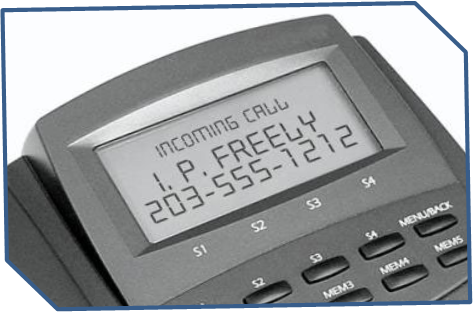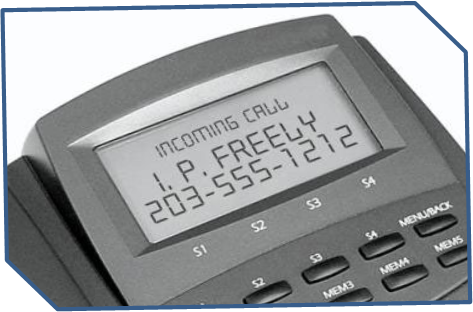
3 Things You Probably Didn’t Know About PBX Caller ID
Your desk phone rings. You’re in the middle of a time sensitive report and glance over to see who’s calling. The PBX caller ID number is 888-555-5565 with a caller ID name of Unknown. You chalk that one up as a telemarketer and keep typing. Five minutes later the phone rings again. This time, the number is local and the corresponding name is that of your largest account, so you stop typing and grab the call.
Once in a while, though, the number is legitimate but the name is wrong. Why does it happen? And if you’ve ever been the one showing up as someone else to other people, you know how difficult it can be to remedy, especially if it’s started happening right after you’ve changed providers.

How Caller ID Works
Many people find themselves asking the question ‘how does caller id work?’. Here are three things you probably didn’t know about caller ID that may surprise you:
1. The convenience services commonly known as Caller ID and CNAM aren’t the same thing. Caller ID refers to the telephone number and CNAM refers to the name associated with the number. The name and number are displayed on the phone of the person being called, but the two pieces of information are being delivered differently.
2. The phone number of the caller is “sent” by the phone company (carrier) that originates the call. The Caller ID name is not sent with the number. The name is fetched by the local phone company (carrier) of the person being called. Then the name is added to display along with the number on the receiving party’s telephone.
3. The local phone company of the person being called does what is called a CNAM dip. It’s the “fetching” I was referring to in the second point above. For each call that comes in, the local phone company of the person being called dips into a database (CNAM database) that matches the name registered to the caller’s number. The problem is that not all carriers use the same database. There are several CNAM database providers, and the local carrier might subscribe to one or two of these databases, but not all.
Now it probably makes sense why the Caller ID Name of your company may be presenting itself correctly to some customers and incorrectly to others. It’s what happens when data is stored in a lot of different places and updated on different schedules. The small phone company in rural Minnesota is subscribed to a CNAM database that only updates once a year when the new phone book comes out while most major carriers are subscribed to services that update on a very frequent and regular basis.
What Can You Do If Your Name is Being Incorrectly Displayed?
Most people live with the annoyance until the databases are updated, but if you’re a business, it’s a big deal. Most companies don’t want to wait up to six months to be updated. That means when you look to move or add new telephone numbers, ask the new carrier if they offer a DID product that will allow control and give the ability to update or change the name that is in the databases. This still isn’t a guarantee that every CNAM database will be updated, but most should.
As a VoIP carrier, we offer such a product, but it’s double the cost of a standard DID. A standard DID cost is $5/mo. for a single DID. The DID with CNAM control costs $12/mo. Because of the higher cost, what we’ve seen and recommended to clients is that they purchase the DID with
CNAM control for their main number and set all of the PBX extensions outgoing caller ID to that main number. Then, all of the other internal DID’s can be provisioned as standard DIDs.
We’ve recently seen a rise in end to end VoIP networks, specifically between CenturyLink and some Spectrum subscribers where an end to end VoIP network exists. In other words, the technology between the originating and terminating carrier networks are essentially the same. This enables CNAM information to be passed from one carrier to another, often via the SIP singling method. As we continue to see big carriers favoring all-IP networks over the traditionally switched telephone network for voice delivery, this practice will become more common place and hopefully remedy the CNAM headaches that exist today.
Partner with Voice and Data Experts
As a full service voice and data provider, N2Net engineers are experienced in dealing with complex VoIP issues like CNAM, NAT translation across VoIP, and Quality of Service. As an ISP, N2Net offers clients the unique ability to route VoIP calls across private, dedicated connections rather than forcing calls to traverse the public internet. Contact a VoIP specialist today to learn more about how N2Net can help your business leverage voice and data to increase efficiency and reduce cost.
Interested in becoming an N2Net Agent?
